Cleavers
Cleavers can be very competitive, causing significant yield losses. The trailing plants also interfere with harvesting equipment. It is a serious contaminant of canola seed, lowering seed quality.
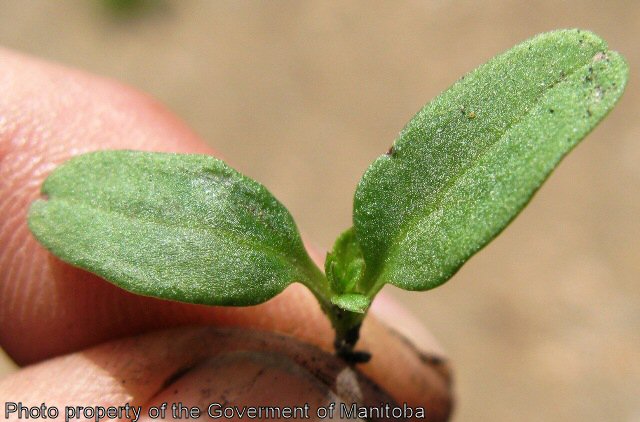 click to enlarge |
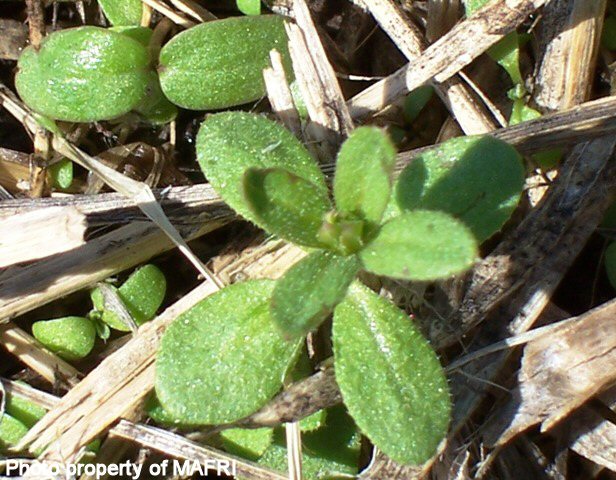 |
 |
 |
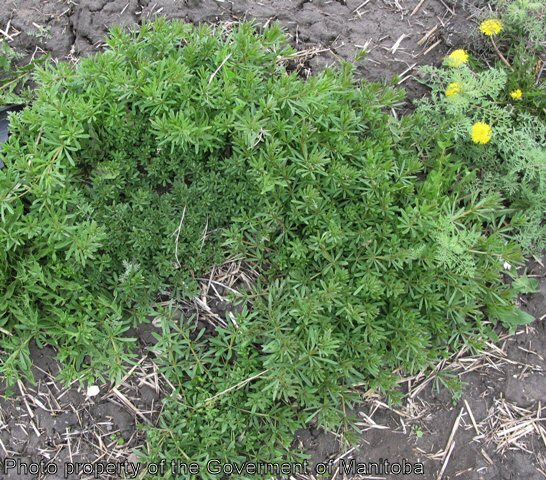 |
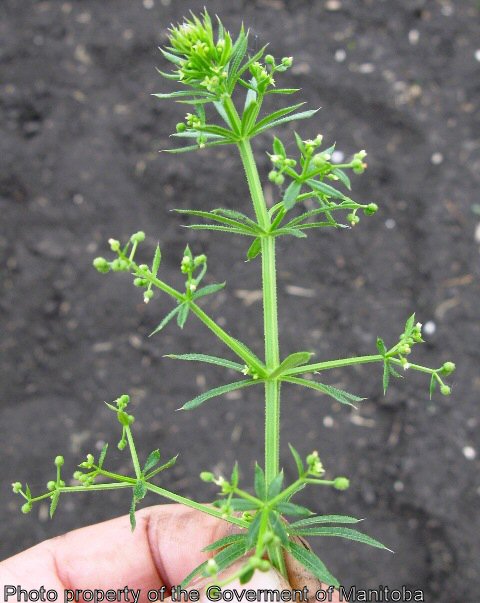 |
 |
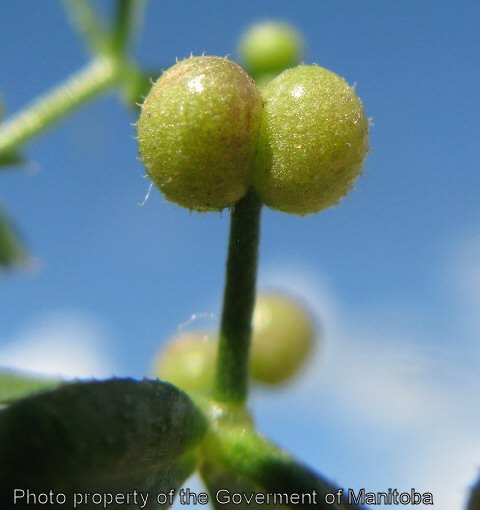 |
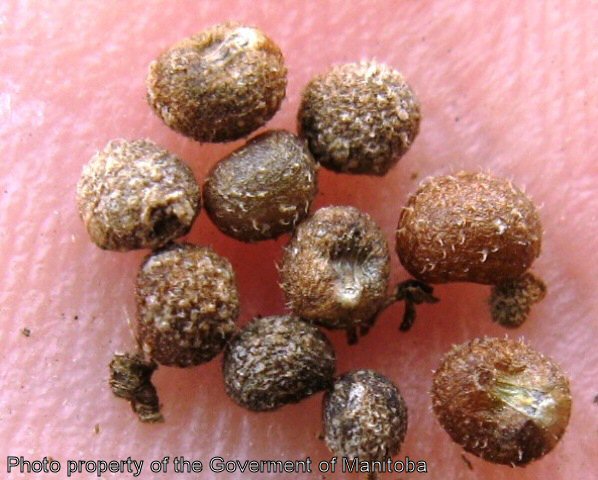 |
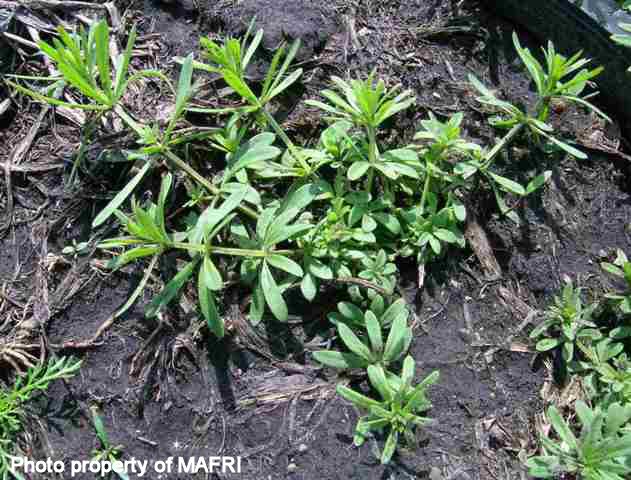 |
Biology
An annual or winter annual, reproducing by seed, it prefers damp, moist soil. The seedling has oblong cotyledons, a square stem with downward pointing hairs, and true leaves in whorls.
When mature, the stems are square, with short, bristly downward pointing hooks growing on corners, generally 60-120 cm (2-4 ft.) long and trailing. The leaves are in whorls, in groups of 6-8. They are pointed at the tip, roughened, and 2.5-7.5 cm (1-3 in.) long. The flowers are white, small, and produced in the axils of upper leaves.
The seeds are grey-brown, rough, and bristly. A single cleavers plant can produce 3,500 seeds. Because of their similar size and shape, they cannot be separated from canola seed. Cleavers seed becomes dormant in dry soil. The seed can remain viable for 1-3 years. Seeds remain viable when eaten by animals. It is easily spread by harvesting equipment and in contaminated manure. The bristly seeds cling to the hair and wool of animals and to clothing.
Scouting Techniques
Take a minimum of 20 weed counts across the field. Check low spots for patches. Scout fields early because the weed is most sensitive to herbicides in its early growth stages.
Effects On Crop Quality
The trailing nature of the plant prevents proper crop development. The clinging bristles make crop handling and harvesting difficult. Because there is so much green material at harvest, straight combining becomes difficult, if not impossible. The seeds are similar in size and shape to canola, making them a serious contaminant of canola and rapeseed, resulting in the downgrading of these crops.
Threshold/Yield Loss
The weed competes for light and nutrients. Heavy infestations can cause yield losses. Cleavers at densities of 100 plants per square metre (sq. yd.) can cause a 20% yield reduction in canola.
Control Tips
Use certified seed that is free of cleavers. All grades of pedigreed seed must be free from cleavers seed. Clean tillage and harvesting equipment before changing fields.
Winter annual cleavers should be controlled in the fall after germination with tillage or a herbicide.
Herbicide options are available in cereal crops, field peas, and herbicide tolerant canola varieties. There are no herbicides registered for control of cleavers in conventional canola.
